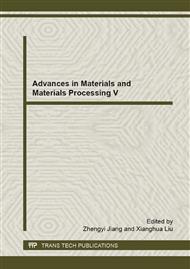p.722
p.727
p.732
p.736
p.741
p.746
p.751
p.756
p.762
Experimental Test on Continuous Drying Sintering Apparatus by Heating Roller Type
Abstract:
Dry sintering process has the vital significance for the printed electronics function. In order to reduce the production cost, the volume of printing technology will be an inevitable choice. In current laboratory research on dry sintering, the object of the dry sintering is still in the static state. In order to study on the related problem of moving dry sintering object under continuous dry sintering process while the volume of printing technology, to solve problems of the static motionless state, we designed a test apparatus for printing electronic dry sintering. The experimental device was driven by stepping motor, controlled by PLC, temperature controlled by external circulation heat conduction oil, heated by roller drying sintering object. Assembly test results showed that the roller surface temperature was uniform heated by experimental device, and the impact on the uniformity of dry sintering was small. The experimental device could simulate volume of continuous motion state, and also could adapt to the preparation of the shorter sample to save the experiment cost.
Info:
Periodical:
Pages:
741-745
Citation:
Online since:
March 2015
Authors:
Price:
Сopyright:
© 2015 Trans Tech Publications Ltd. All Rights Reserved
Share:
Citation:


